Apple M3 vs M3 Pro vs M3 Max chips: what you need to know
The latest Mac chips are the fastest yet, but which should you go for? Here's everything that you need to know about M3.
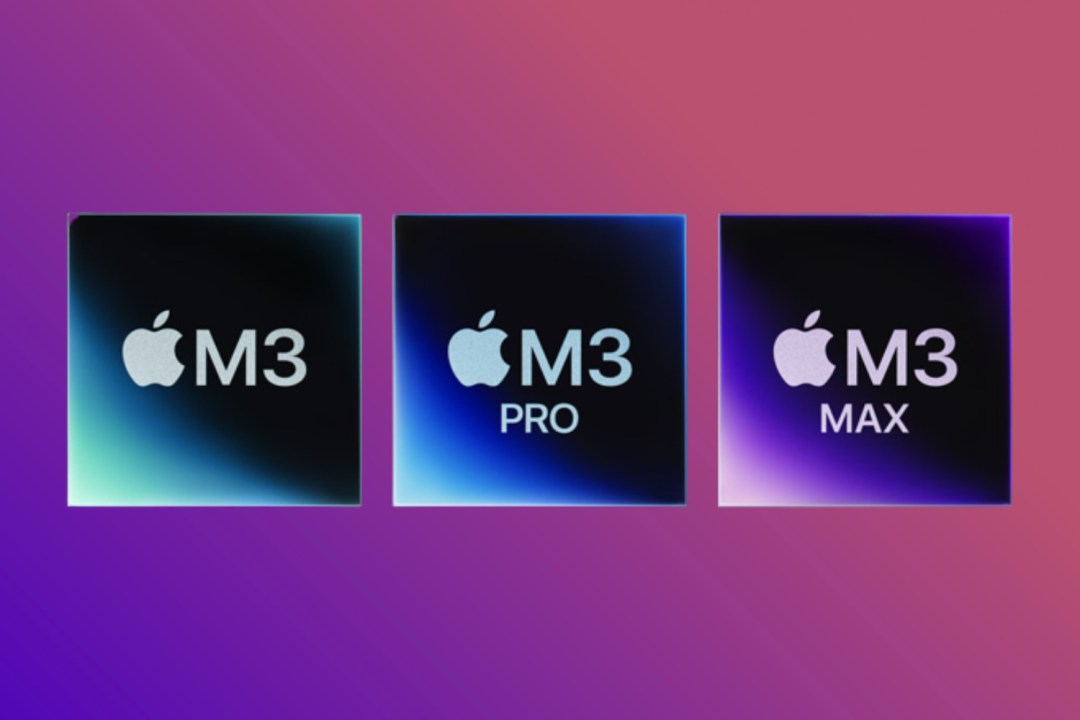
The latest top MacBook models have arrived, introducing the new M3 family of chips. The processors are the latest addition to the Apple silicon line-up. Made in-house, these chipsets are the most powerful we’ve seen from the Cupertino-based company… well, ever. Each generation gets even faster than the last, giving us even more impressive machines. The M3 family includes three individual chips so far: M3, M3 Pro, and M3 Max.
But with three options to pick from in the latest generation alone, which one is right for you? Here, we compare each of the new processors and tell you everything you need to know.
What even is Apple silicon?

Apple silicon is the name for the in-house chips that the fruity tech company produces. They power all of the latest Macs, making them faster and more efficient than ever. Getting technical, they’re known as System on Chip (SoC) processors, which means everything is on the same board. It makes speeds faster, as data doesn’t have to travel between components scattered across different parts of your machine.
While M3 is the latest addition to the Apple silicon line-up, things started back in November 2020 with the launch of M1 in the MacBook Air. Then in October 2021, M1 Pro and Max made an appearance for the MacBook Pro revamp. M1 Ultra arrived with the Mac Studio in 2022, before M2 debuted at WWDC 2022 in June. The same cycle repeated, with the Pro, Max, and Ultra specs appearing throughout 2023. And that takes us to now, where all three versions of M3 arrived at once.
M3 chips: what’s the same?
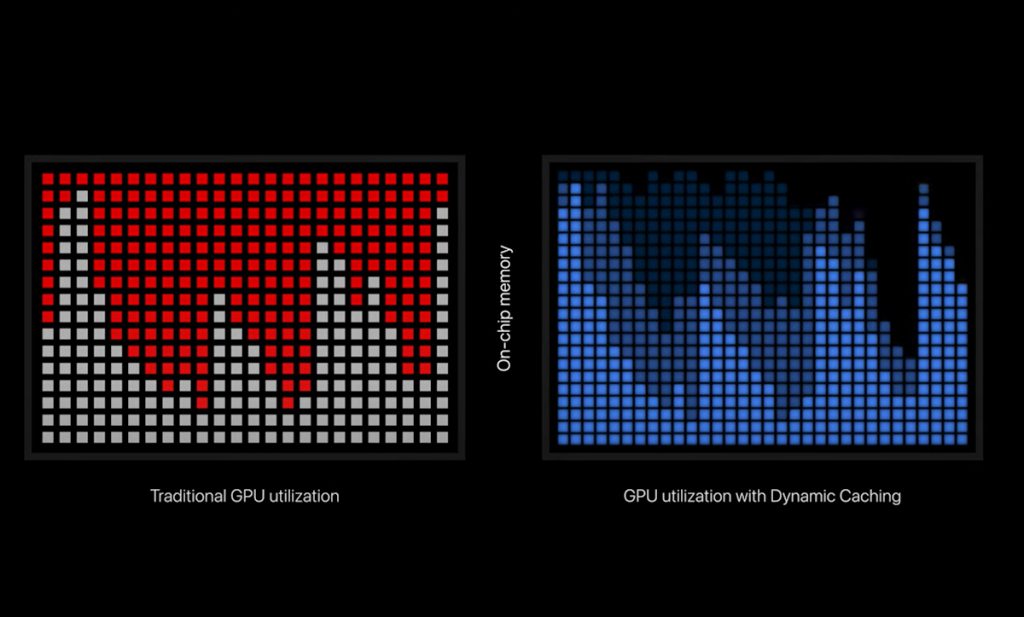
Despite the chips catering for different levels of power, there are a few things that remain the same across the M3 family. Obviously, all of the chips are an improvement from the previous generation, but what else is the same?
First up is the new architecture that the chips are built from. Apple uses 3nm technology for the new M3 chips, just like the iPhone 15 Pro‘s processor this year. The next-gen tech shrinks things down, so that Apple can cram even more on to the physical board of the chip. That means extra room for more power, making the chips even more efficient.
Also the same across the chips, are the improvements to the GPU from the previous-gen M2. Dynamic caching lets the GPU use local memory so only the exact amount that’s needed for each task gets used – bumping performance significantly. It lets hardware accelerated mesh shading deliver more complicated scenes, and hardware accelerated ray tracing to Mac for the first time. It lets games render more realistic shadows. This combo lets pro apps deliver up to 2.5x faster rendering than the M1 chips.
M3 chips: what’s different?
When you dive into each of the chips, the make-up of them begins to vary drastically. Each processor in the M3 family has a different number of cores and memory, allowing for better performance as you go for the higher specced options.
The standard M3 offering delivers an 8-core CPU and 10-core GPU. You can increase the unified memory up to 24GB. Its CPU is up to 20% faster than M2, while the GPU is also 20% faster. Going up to the M3 Pro, you get a 12-core CPU, 18-core GPU, and 36GB of memory. Its CPU is up to 20% faster than M1 Pro, while the GPU is 10% faster than M2 Pro. M3 Max is the best of the bunch, and pushes things even further. It packs a 16-core CPU, 40-core GPU, and up to 128GB of memory. Its CPU is up to 50% faster than M2 Max, while the GPU is 20% faster.
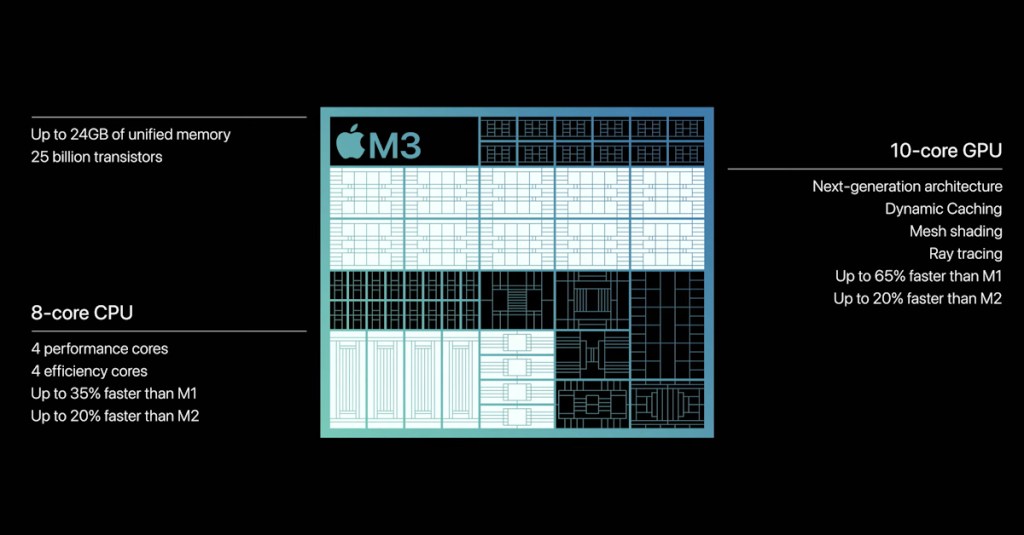
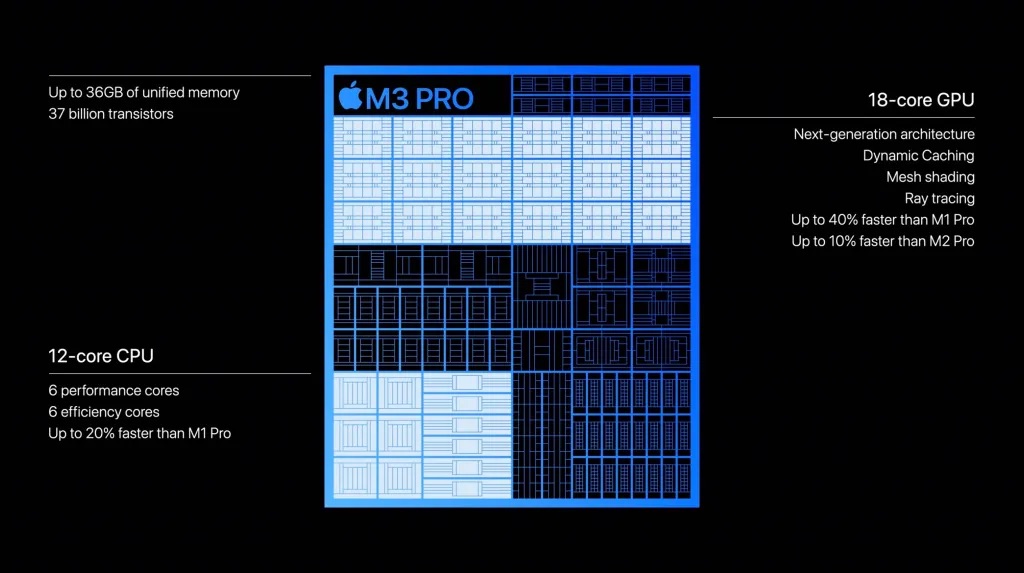
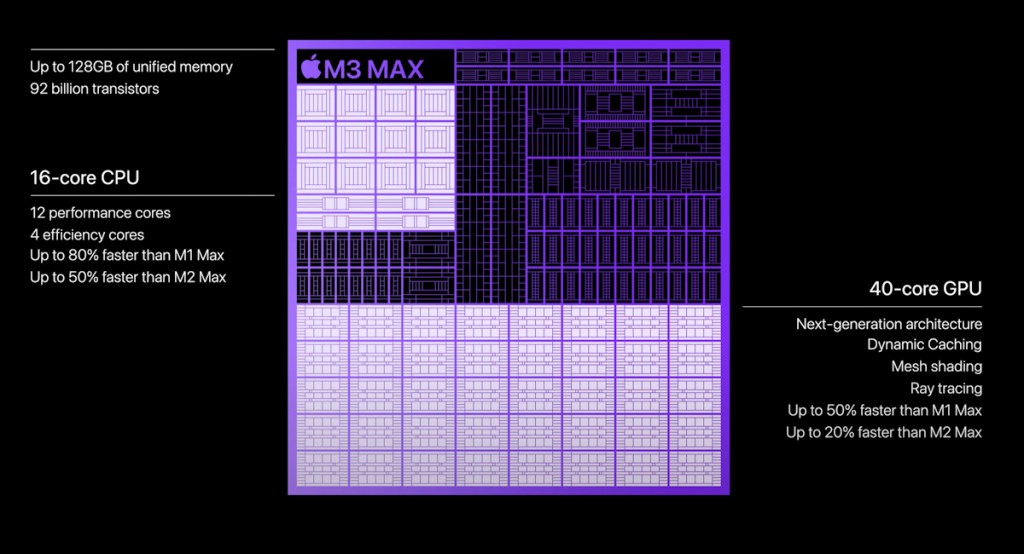
With each version of M3, you can even more power. But these chips can handle some serious tasks. While we need to wait for benchmarks to come out and to get our hands on these machines, we already know how powerful Apple silicon can be. Based on the high-end M2 processors, you only need to look towards the top end for extremely high workloads – we’re talking exporting multiple streams of 4K video at once. The standard M3 chip is more than likely going to be able to handle just about anything you throw at it.


